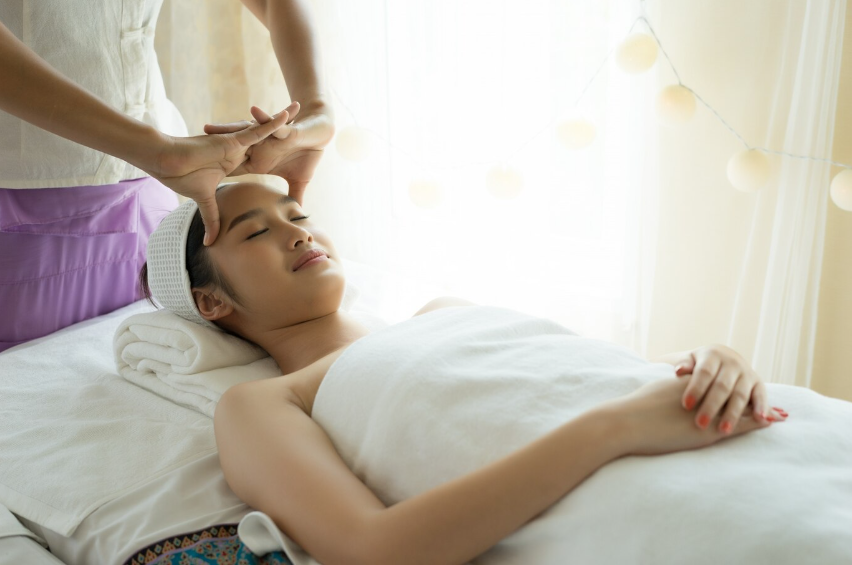Are you suffering from excruciating jaw pain caused by TMJ disorder? Is ibuprofen and bite guards not providing the relief you need? It’s time to consider a TMJ massage. Here, we will explore three effective ways that a TMJ massage can alleviate jaw pain and promote healing.
Understanding Massage for TMJ Disorder
Before we delve into the benefits of a TMJ massage, let’s first understand what TMJ disorder is. TMJ, or temporomandibular joint, is the joint that connects your jawbone to your skull. TMJ disorder can cause symptoms such as jaw pain or tenderness, headaches, facial pain, earaches, and difficulty opening or closing the mouth.
There are various causes of TMJ disorder, including arthritis or a jaw injury. However, if your TMJ disorder is related to tightness and imbalance in the TMJ muscles due to clenching, a professional jaw massage might be just what you need.
TMJ Trigger Point Massage
One effective technique for relieving TMJ pain is trigger point massage. Trigger points are hyper-tensed muscles, also known as muscle knots, that can cause jaw aches and pains. The masseter muscle, which covers the jaw over your teeth, is often responsible for TMJ pain.
A skilled massage therapist can apply pressure to specific trigger points in the masseter muscle to release tension and alleviate pain. By kneading the muscle fibers and promoting relaxation, trigger point massage can provide significant relief for TMJ disorder.
TMJ Muscle Manipulation
In addition to trigger point massage, another approach to relieving TMJ pain is through muscle manipulation. Professionals such as chiropractors, physical therapists, massage therapists, and osteopathic physicians can perform manual therapy to restore normal muscle tone and balance in the TMJ muscles.
During a TMJ muscle manipulation session, the therapist will gently touch the muscle to relax it. They will then apply firm pressure to any trigger points, using their thumb or finger, to release tension and promote healing. The kneading and manipulation of the TMJ muscles can help unravel tight muscle fibers and provide much-needed relief.
Also read: Benefits of Shorter Massage Sessions
Jaw Exercises for TMJ Relief
In conjunction with TMJ massage, jaw exercises can help stretch, strengthen, and relax the jaw muscles. These exercises can be performed at home to complement the benefits of professional treatment. Let’s explore some effective jaw exercises recommended by experts:
Exercise 1: Jaw Relaxation
- Touch your tongue to the roof of your mouth behind the upper front teeth.
- Open and close your mouth while maintaining this tongue position.
- Repeat this exercise several times.
Variation: Place a finger in front of your ear on the TMJ. Use your finger on your chin to partially or fully open and close your jaw.
Exercise 2: Chin Tucks
- Stand tall against a wall.
- Pull your chin towards the wall to create a double chin.
- Hold this position for three to five seconds.
- Repeat the exercise several times.
Exercise 3: Mouth Resistance
- Place your thumb under your chin.
- While opening your mouth, apply pressure to your chin with your thumb.
- Hold this position for three to five seconds before closing your mouth.
- Reverse the exercise by squeezing your chin between your fingers to resist mouth closing.
By incorporating these jaw exercises into your routine, you can further enhance the benefits of TMJ massage and promote long-term relief from TMJ disorder.
To optimize TMJ relief massage techniques, here are some additional tips to consider:
- Stay Consistent: Regularly schedule TMJ massages and perform jaw exercises to maintain the benefits and prevent the recurrence of TMJ pain.
- Practice Stress Management: Stress can exacerbate TMJ disorder. Incorporate relaxation techniques such as deep breathing, meditation, or yoga into your daily routine to reduce stress and promote overall well-being.
- Maintain Good Oral Hygiene: Poor dental health can contribute to TMJ disorder. Brush and floss regularly, visit your dentist for check-ups, and address any dental issues promptly.
- Avoid Trigger Foods: Some foods can aggravate TMJ pain. Avoid hard, chewy, or sticky foods that require excessive jaw movement.
- Use Heat or Cold Therapy: Applying a warm compress or cold pack to the affected area can help reduce inflammation and alleviate TMJ pain. Experiment with both heat and cold to determine which provides the most relief for you.
Remember, everyone’s experience with TMJ disorder is unique. It’s essential to consult with a healthcare professional to receive personalized advice and treatment options tailored to your specific needs.
Also read: Benefits and Techniques of Oncology Massage
Conclusion
If you have TMJ pain, don’t worry. A TMJ massage and some exercises for the jaw are what you need. These approaches, either trigger point massage, muscle manipulation, or their combination, have proven effective in relieving jaw pain and restoring muscle equilibrium, resulting in improved living standards.
Don’t forget that you need to see a doctor to correct this problem. They can do individualized treatment according to your needs, and you are guaranteed to receive the best care.
To experience the benefits of a TMJ massage and jaw exercises, reach out to Spa Utopia. With their expertise in advanced therapeutic massage and commitment to holistic wellness, they can provide the specialized care you need for TMJ relief.
Frequently Asked Questions
Can TMJ massage cure TMJ disorder?
While TMJ massage can provide significant relief from TMJ pain and promote healing, it may not cure the underlying causes of TMJ disorder. It is crucial to address any underlying issues, such as dental problems, muscle imbalances, or stress, that may contribute to TMJ disorder.
How often should I receive a TMJ massage?
The frequency of TMJ massages can vary depending on the severity of your TMJ disorder and your response to treatment. It is best to consult with a healthcare professional who can assess your condition and recommend an appropriate treatment plan.
Are there any side effects of TMJ massage?
TMJ massage is generally safe and well-tolerated. However, some individuals may experience temporary soreness, redness, or bruising in the treated area. These side effects are usually mild and subside within a few days.
Can I perform jaw exercises without professional guidance?
Jaw exercises can be beneficial for TMJ relief when performed correctly. However, it is essential to consult with a healthcare professional or a qualified therapist who can assess your condition and guide you on the appropriate exercises for your specific needs.





